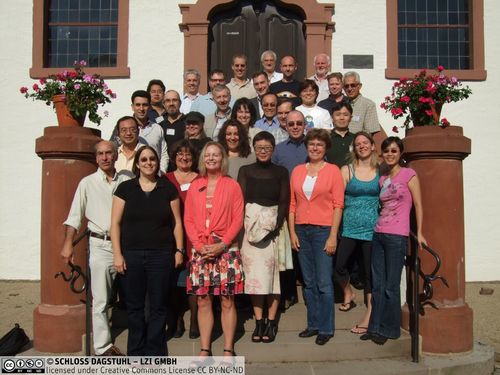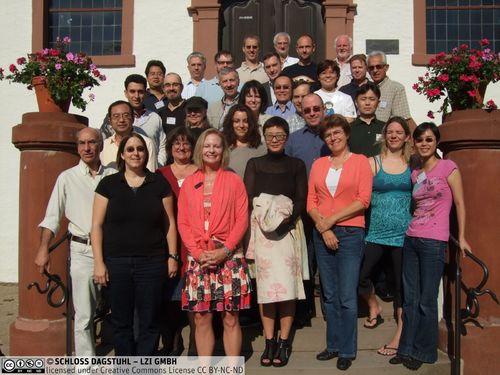Dagstuhl Seminar 13352
Interaction with Information for Visual Reasoning
( Aug 25 – Aug 30, 2013 )
Permalink
Organizers
- David S. Ebert (Purdue University - West Lafayette, US)
- Brian D. Fisher (Simon Fraser University - Surrey, CA)
- Petra Isenberg (University of Paris South XI, FR)
- Shixia Liu (Microsoft Research - Beijing, CN)
Contact
- Andreas Dolzmann (for scientific matters)
Scientific research and engineering practice have long required that theories and methods be informed by the available data. We now see calls for a greater reliance on data in other areas of human decision-making, ranging from public health to financial regulation. For all of these application areas, increases in volume, velocity, and variety of data pose computational challenges. Decisions that directly affect human well-being, however, also have social and political ramifications. For these value-laden "wicked problems" human judgment and computation must play complementary roles.
Scientific and information visualization researchers routinely build and evaluate interactive visualization systems to aid human reasoning. However, this work is often disconnected from the methodological and theoretical tools developed by the cognitive and social scientists to address the complexities of human thought processes. Those tools can help us to understand human perception and understanding of data visualization, but typically do not address how rich "mixed-initiative" interaction with computational processes could be engineered to support better decision-making.
The goal of this Dagstuhl Seminar is to bring together a group of cognitive and computer scientists who have been carefully selected for their theoretical and methodological capabilities and history of interdisciplinary collaboration. We plan discussions with a focus on four key aspects of human interaction with visual information systems. These are the following:
1. Interactive "visual thinking tools" for exploration, understanding, explanation, decision, dissemination, and persuasion using concepts and data
2. Natural human-information interaction models that support human cognition and (inter)action as they unfold in time
3. Collaborative sense making with big multi-modal data and problems
4. Mixed-initiative data processing, balancing active user input with computational processing to enable visual manipulation and analysis of models, the related parameters, and raw data
The unique environment that Schloss Dagstuhl provides will enable us to work towards deriving empirical methods and software development models to provide a structured scientific and formal basis for an underlying analytics of human interaction with information. We will strive to:
1. Build theory and research methods to bridge computational and cognitive science aspects of visually enabled reasoning
2. Provide ways that analysts and institutions can assess the validity of analyses that use those methods (i.e. in an analytical logic)
3. Describe practical methods of integrating cognitive science in software engineering: design specifications, formative and summative evaluation, and translation of scientific research into specific application areas, institutions, and user communities
4. Discuss methods to integrate analytic processes that derive meaning from data with socio-political processes by which organizations and societies make decisions and execute them
We hope that this Dagstuhl Seminar will lay the groundwork for ongoing discussion between the cognitive and computer science communities about these important issues. We look forward to continuing this work in other venues such as IEEE VIS and the Cognitive Science Society meetings.
Scientific and information visualization researchers routinely build and evaluate interactive visualization systems to aid human reasoning. However, this work is often disconnected from the methodological and theoretical tools developed by the cognitive and social sciences to address the complexities of human thought processes. Those tools and methods can help us to understand human perception and understanding of data visualization, but typically do not address how rich interaction with computational processes could be engineered to support better decision-making. Yet, an increasing number of researchers are turning to the question of how to best engineer interaction techniques for visualization and how to best study and understand their influence on cognition, insight formation, and also efficiency and effectiveness of work. The goal of this seminar was to bring together researchers in cognitive science and psychology with researchers in the field of visualization to discuss the value that interaction can bring to visualization, how best to study it, and how research on interaction in cognitive science can be best integrated into visualization tools and systems to the benefit of domain experts or casual users of these tools.
 David S. Ebert and Brian D. Fisher and Petra Isenberg
David S. Ebert and Brian D. Fisher and Petra Isenberg
- Simon Attfield (Middlesex University, GB) [dblp]
- Anastasia Bezerianos (University Paris-Sud, FR) [dblp]
- Sheelagh Carpendale (University of Calgary, CA) [dblp]
- Peter C.-H. Cheng (University of Sussex - Brighton, GB) [dblp]
- Fanny Chevalier (University of Toronto, CA) [dblp]
- Christopher Collins (UOIT - Oshawa, CA) [dblp]
- Mary Czerwinski (Microsoft Corporation - Redmond, US) [dblp]
- David S. Ebert (Purdue University - West Lafayette, US) [dblp]
- Thomas Ertl (Universität Stuttgart, DE) [dblp]
- Brian D. Fisher (Simon Fraser University - Surrey, CA) [dblp]
- Steve Franconeri (Northwestern University - Evanston, US) [dblp]
- Kelly Gaither (University of Texas - Austin, US) [dblp]
- Wayne D. Gray (Rensselaer Polytechnic, US) [dblp]
- Hans Hagen (TU Kaiserslautern, DE) [dblp]
- Petra Isenberg (University of Paris South XI, FR) [dblp]
- Tobias Isenberg (University of Paris South XI, FR) [dblp]
- Daniel Keefe (University of Minnesota - Minneapolis, US) [dblp]
- David Kirsh (University of California - San Diego, US) [dblp]
- Jörn Kohlhammer (Fraunhofer IGD - Darmstadt, DE) [dblp]
- Heidi Lam (Google Inc. - Mountain View, US) [dblp]
- Bongshin Lee (Microsoft Corporation - Redmond, US) [dblp]
- Chris North (Virginia Polytechnic Institute - Blacksburg, US) [dblp]
- Catherine Plaisant (University of Maryland - College Park, US) [dblp]
- Margit Pohl (TU Wien, AT) [dblp]
- Huamin Qu (HKUST - Kowloon, HK) [dblp]
- Kamran Sedig (University of Western Ontario - London, CA) [dblp]
- Jinwook Seo (Seoul National University, KR) [dblp]
- Christian Tominski (Universität Rostock, DE) [dblp]
- Xiaoru Yuan (Peking University, CN) [dblp]
- Michelle X. Zhou (IBM Almaden Center, US) [dblp]
Classification
- computer graphics / computer vision
- modelling / simulation
- society / human-computer interaction
Keywords
- Visualization
- Visual Analytics
- Mixed-Initiative Systems
- Cognitive Systems



 Creative Commons BY 3.0 Unported license
Creative Commons BY 3.0 Unported license
